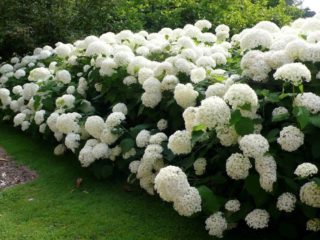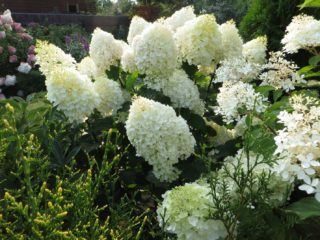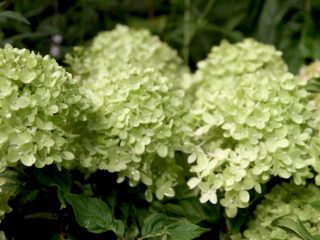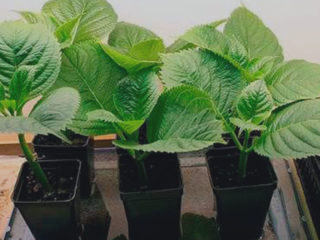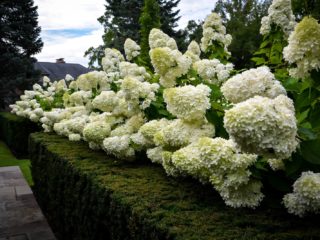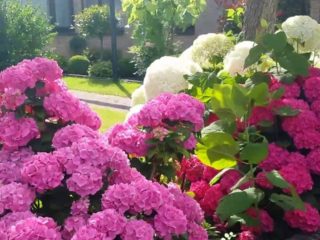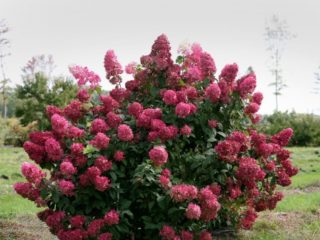Content
Hydrangea Little Lime is a small representative of the Hydrangea family. Due to its miniature size, it has gained great popularity among novice gardeners who are just learning how to plant gardens and decorate them with a variety of flowers, bushes and trees. At the same time, it is also used for compositions in large gardens, front gardens, parks and other public and private places.
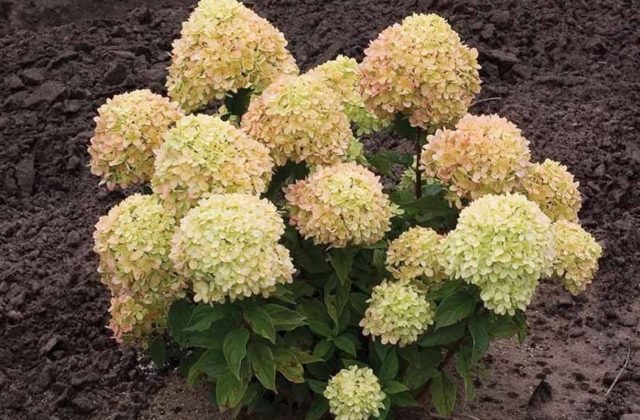
The Little Lime hydrangea variety is distinguished by its miniature size.
Description of Hydrangea paniculata Little Lime
Hydrangea paniculata little lime is a small ornamental shrub, a tree that is formed by the gardener with regular pruning.
Paniculata hydrangea Little Lime is only about 1 m in height, but 1 m or more in width. The foliage is oval, narrowed at the top, jagged, velvety to the touch, green in color. During the fall, the color of the Little Lime hydrangea bush acquires burgundy, red, and purple shades.The inflorescences of the variety are large, wide-pyramidal, rounded at the top. At the beginning of flowering, the color is light green, which is where the name comes from. Over time, the color changes, becoming creamy, pale pink or rich. But those specimens of the variety that are in the sun, but not in the shade, are predisposed to such a range.
The root system is shallow and branched. The stem is straight, the bushes do not fall apart. Like others from this family, the plant withstands frost, down to -35 °C.
Hydrangea Little Lime in landscape design
It is known that the height of the Little Lime hydrangea barely reaches 1 m. But in width it extends several meters, which makes the shrub indispensable as a hedge. Hydrangea of this variety is increasingly used in landscape design.
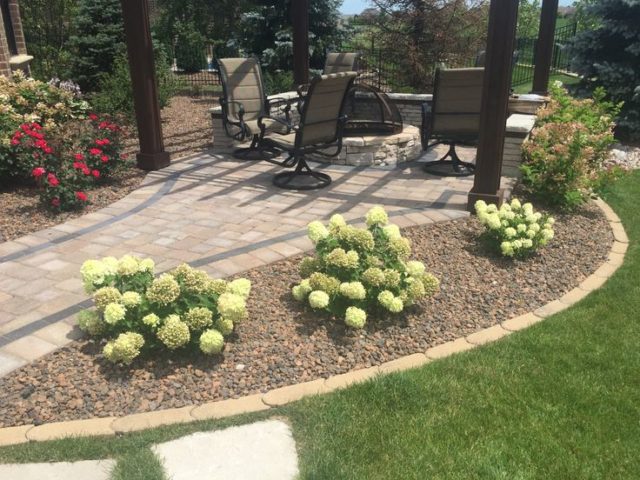
Shrubs are planted separately from other plants, and also mixed decorative compositions are created.
This trick is more often used to decorate a house, but in large quantities it can be used to decorate the courtyards of country houses.
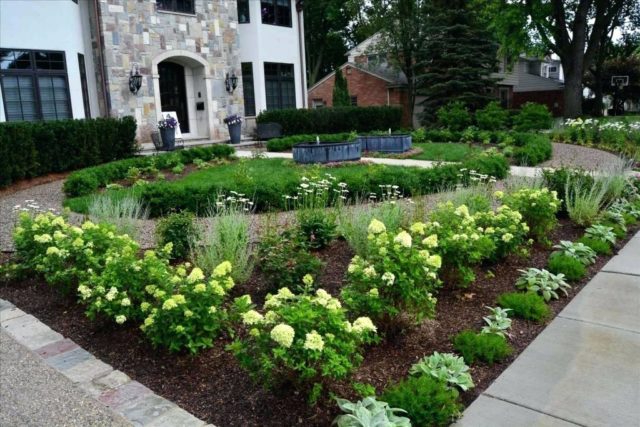
In general, Little Lime hydrangea is used in the design of personal plots, public recreational parks, gardens and front gardens
Given its unpretentiousness and winter hardiness, Little Lime will please the eye almost all year round.
Winter hardiness of hydrangea Little Lime
Hydrangea differs from many plants in its tolerance to winter cold. The Little Lime variety is no exception; it tolerates temperatures down to -33-35 °C. Usually the bush does not need additional insulation, but it can be pruned and branches tied.At first, in the first years of its life, a fragile hydrangea is covered with a special material; later, the soil around the trunk can be mulched so that the roots do not freeze. This is especially true for those specimens from which gardeners grow miniature trees. Shrubs do not even need mulching.
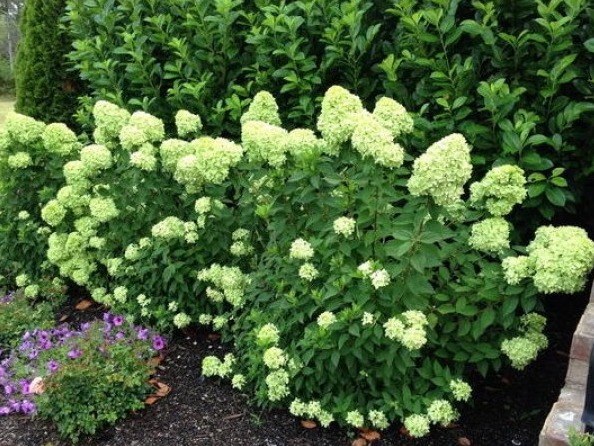
It is noteworthy that freezing shoots do not die, but bloom in the spring, which indicates good frost resistance
Planting and caring for Little Lime hydrangea
Hydrangea Little Lime is an unpretentious variety of this family of plants. It is grown on the south side of the garden in the partial shade of trees, excluding direct sunlight and sharp gusts of wind. However, the flower should not be planted in close proximity to trees, because they will take moisture from the bush.
The Little Lime variety does not tolerate the presence of lime in the soil, so the ground for the bush must be prepared in advance. Hydrangea loves moisture, but not its excess. It’s the same with the sun - the plant needs it, but at the same time, scorching direct rays can harm it.
Selection and preparation of a landing site
Little Lime hydrangea differs from other varieties in that it is ready to grow in any soil. However, the soil is fed with additional fertilizers, its acidity is increased, and the newly planted specimen is given additional fertilizer. For new seedlings, prepare holes no more than half a meter deep, mixing soil with humus, peat, sand and leaf soil. Like other members of the family, it is better to plant it in the partial shade of trees, fences and avoid strong winds and drafts.
Despite the fact that Little Lime produces amazing colors in the sun, you should not plant hydrangea in the open rays, otherwise it may suffer - the foliage turns yellow and the flowers fall off.
Landing rules
It is better to plant Little Lime hydrangea in the spring so that it has time to “get comfortable”, get stronger and adapt to the conditions. Many gardeners plant it in the fall, but this is risky, since the young bush may not survive the first frost. Little Lime is placed away from the house (and other premises) so that there is no danger of damage to the bush by icicles in winter. The distance from other plantings should be about 1 m.
After planting the bush in the soil, compact it and water it well. The root collar should be located above the ground. At first, and also before the first wintering, the soil is mulched, that is, sprinkled with bark, sawdust, and mown grass to retain moisture and heat. Later, when the soil dries out, it needs to be loosened (carefully so as not to damage the roots) and watered. Over the course of 2-3 years, mulching is gradually stopped, because the bush will already grow and provide the necessary conditions for itself.
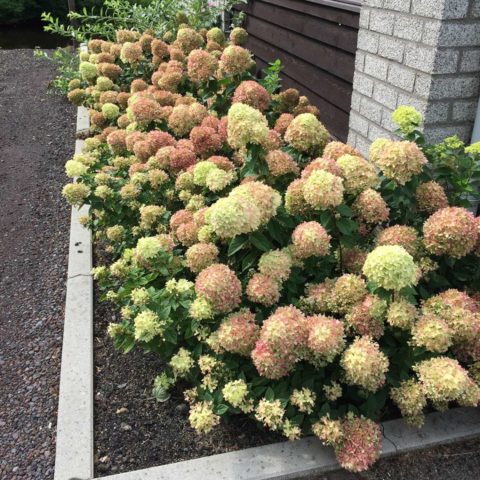
It is advisable not to plant flowers near buildings or under trees.
Watering and fertilizing
Watering and fertilizing are important steps in the first stages of caring for Little Lime hydrangea. Like other varieties, it loves moisture, so from the moment of planting it is actively watered, after loosening the drying soil. In the spring, from about May, it is fertilized with superphosphate, humus, and urea. During the flowering period, mineral and organic compositions alternate every two weeks.
During active growth, hydrangeas regularly loosen the soil around the stems and hill them up to a height of about 30 cm. Watering should be stopped during the rainy season, since although the plant loves moisture, it does not react well to stagnant water. Gardeners recommend following a trick that will strengthen the root system of the Little Lime hydrangea, namely, watering it with a weak solution of potassium permanganate.
Trimming
Pruning allows the gardener to “play” with the shape of the Little Lime hydrangea. He can make a bush or miniature tree out of it. This important process also allows you to control the number and size of inflorescences. It is noteworthy that most of them grow on lateral branches. Trimming excess shoots stimulates their growth.
Pruning removes weak, damaged branches, as well as small inflorescences from the bush. The latter are removed so that the “forces” of the hydrangea go to the main, desired parts of the plant. Weak and damaged branches are cut off to three buds so that later they grow back stronger. Sometimes all the branches are cut off, which “rejuvenates” the Little Lime.
If the plant is not pruned and cared for, soon its branches will become thin and fragile, and the inflorescences will be sparse and small.
Winter shelter for Little Lime hydrangeas
Adult hydrangeas of the Little Lime variety do not need shelter for the winter. They can be left untouched down to – 30-35 °C. However, care should be taken for young seedlings in the first year of life, and so on up to a maximum of three years. Depending on the chosen shape of the bush, the branches should be tied so that they are not damaged by the wind or the weight of snow. Then the “composition” is covered with a special covering material, for example, spunbond.
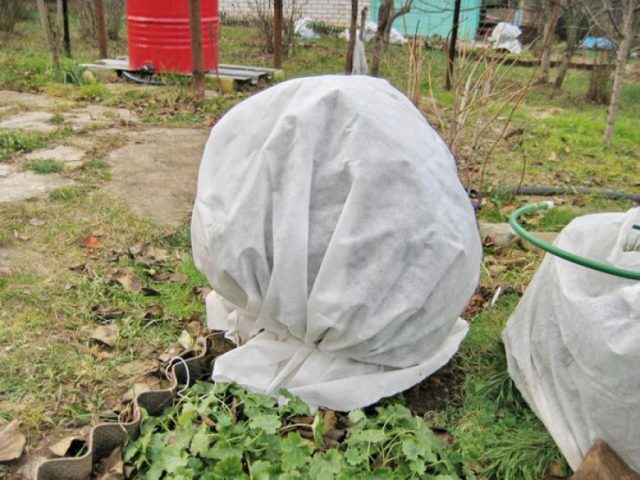
The bush is wrapped several times with fabric or folded in several layers and secured
Reproduction
This variety can be propagated in several ways, including growing directly from seeds, cuttings, and dividing the bush.
Hydrangea seeds are very small, with poor germination, and the grade may be lost. This method will require 4 years of work with it.
The most common method is cuttings. The material for this propagation option is prepared in mid-June from annual shoots. An important condition is that you need to save three pairs of kidneys, and more is possible. The cut is made 2 cm from the lower bud. If the shoot is short, the top is not touched; if it is long, it is cut off horizontally 5 cm from the top bud. The bottom sheet should be plucked off, the rest should be cut in half. The cuttings are immersed in water with the addition of a root growth stimulator. When they appear, it is transferred to a container with prepared soil - peat (1) and sand (2). The seedling is planted 3 cm into the ground and greenhouse conditions are created so that the cuttings have sufficient moisture.
A well-developed bush is dug up and divided into 2-3 parts. This is done in the spring or at the very beginning of autumn. There must be buds on each part. Then they are seated in separate holes and carefully looked after for some time.
Diseases and pests
The appearance of a hydrangea can tell a lot about its health:
- An excess of water will be reflected in the foliage, which changes color to brown and rusty.
- Lack of moisture is manifested by drying of the leaves at the ends. It is recommended not only to water the soil, but also the entire bush.
- Individual brown spots that resemble burns indicate overheating under the sun; it is necessary to provide the bush with shade.
Hydrangeas themselves are resistant to diseases, but they can be overcome by aphids, bugs, snails, and weevils.Their presence will become clear if the foliage dries and falls for no reason, the inflorescences wither and crumble. The fight against them is quite simple - using products that can be purchased at a specialized store or made with your own hands.
One of the effective recipes against pests: dissolve 100 g of laundry soap in 1 liter of water. If there are too many insects, it is permissible to use chemicals according to the instructions.
Conclusion
Hydrangea Little Lime is a large bush or miniature tree, depending on the gardener's preferences. Like most representatives of this species, the variety is unpretentious, hardy, and winter-hardy. Little Lime is used to improve a small garden or vegetable garden, as well as in landscape design.
